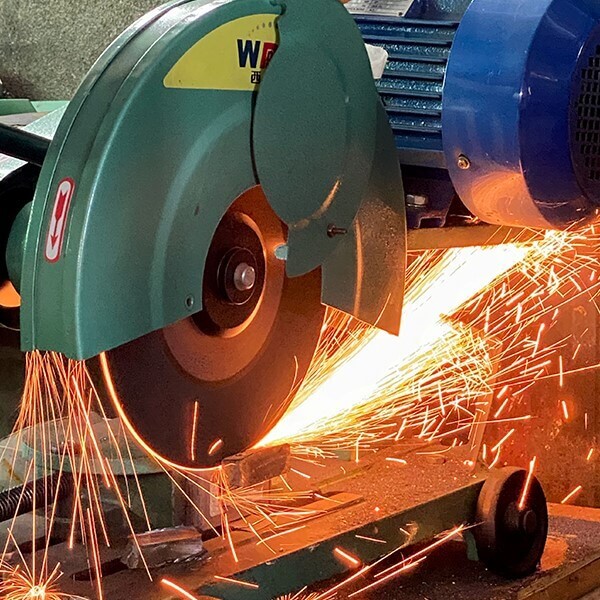Stainless steel casting is a versatile and widely used manufacturing process that allows for producing intricate and complex metal components. Despite its numerous advantages, this method has its challenges.
Manufacturers often encounter obstacles that can affect the quality and efficiency of the casting process. This article will explore some common challenges faced in stainless steel casting and discuss effective strategies to overcome them.
Casting Defects:
One of the primary challenges in stainless steel casting is the occurrence of casting defects.
These defects can manifest in various forms, including porosity, shrinkage, and cracks. Porosity, in particular, can compromise the structural integrity of the cast components.
- Solution:
Employing proper gating and riser design is crucial to minimize defects. Also, maintaining optimal pouring and solidification conditions and utilizing advanced simulation tools can help identify potential issues before casting.
Material Selection:
Choosing the right stainless steel alloy for a specific application is critical. Different alloys exhibit varying fluidity levels, shrinkage rates, and thermal conductivity, impacting the casting process.
- Solution:
Conduct thorough material analysis and testing to determine the most suitable alloy for the intended application. Collaboration with material experts can provide valuable insights into alloy properties and performance under different casting conditions.

Surface Finish And Tolerance Requirements:
Achieving the desired surface finish and dimensional tolerances is a constant challenge in stainless steel casting. Variations in cooling rates and mold conditions can lead to inconsistencies in the final product.
- Solution:
Implementing precision casting techniques, such as investment casting, can help achieve tight tolerances and superior surface finishes. Regular maintenance of molds and equipment is essential to ensure consistent results.
Mold Erosion And Wear:
The harsh conditions of molten stainless steel can lead to mold erosion and wear over time. This can result in mold surface degradation and compromise the quality of subsequent castings.
- Solution:
Utilize high-quality refractory materials for molds and regularly monitor and maintain them to prevent erosion and wear. Implementing proper cooling systems can also help extend the lifespan of molds.
Heat Treatment Challenges:
Stainless steel components often require heat treatment to enhance their mechanical properties. However, achieving uniform heat distribution and avoiding distortion during the heat treatment can be challenging.
- Solution:
Employ controlled and gradual heat treatment processes with advanced technology such as induction heating. Ensuring proper fixturing and minimizing variations in section thickness can contribute to uniform heat treatment.
Environmental Considerations:
Stainless steel casting involves high temperatures and various chemical processes, which can have environmental implications. Addressing these concerns, such as energy consumption and emissions, is crucial for sustainable manufacturing practices.
- Solution:
Implement energy-efficient technologies like electric furnaces and explore environmentally friendly mold coatings. Additionally, recycling and reusing casting materials can reduce the overall environmental impact.
Quality Control And Inspection:
Maintaining consistent quality throughout the stainless steel casting process requires robust quality control measures. Detecting and addressing defects early in the production cycle is essential to prevent costly rework.
- Solution:
Implement rigorous inspection protocols, including non-destructive testing methods like X-ray and ultrasonic testing. Continuous monitoring of process parameters and real-time feedback mechanisms can help identify and rectify issues promptly.
Finishing Techniques:
Stainless steel castings often require additional finishing operations to meet customer specifications. Polishing, sandblasting, and plating are some of the common techniques used.
- Solution:
Select finishing processes that can create superior surface finishes and provide an optimal balance between cost and quality. Automated processes with advanced robotic technology can reduce human intervention, ensuring consistent results.
Cost Reduction:
Reducing production costs without compromising quality is a top priority for stainless steel casting companies.
- Solution:
Research cost-saving measures such as automation and optimization of production processes. Additionally, exploring alternative materials with comparable properties can reduce costs significantly. Leveraging existing resources and negotiating better deals with suppliers can also prove beneficial.
High Precision Requirements:
A Stainless Steel casting often needs to meet demanding precision requirements.
- Solution:
Introduce advanced machining techniques such as CNC milling and grinding for precise dimensional accuracy.
Additionally, investing in automated measuring equipment can help ensure consistent quality control.
Employing skilled personnel with specialized knowledge can also boost the production of high-precision parts.
Design Optimization:
It is crucial to design them correctly to achieve optimal performance from stainless steel castings.
- Solution:
Working with experienced design engineers and leveraging computer-aided design (CAD) tools can help optimize the casting design for maximum efficiency.
Additionally, advanced simulation techniques can be used to ensure that the desired product performance is achieved. Also, reducing excess material and weight can help reduce production costs.
Process Efficiency:
Increasing process efficiency is essential for improving production cycles and eliminating unnecessary delays.
- Solution:
Automation can help streamline the casting process, reduce labor costs, and improve overall quality. Modern technologies such as additive manufacturing and virtual reality can also accelerate design and prototyping processes.
Investing in process simulation software can also help identify potential bottlenecks and prevent delays.
Conclusion:
Stainless steel casting is a complex process, and maintaining consistent quality requires careful planning and execution.
Companies can ensure they produce parts that meet customer expectations by implementing rigorous inspection protocols, selecting the right finishing techniques, exploring cost-saving measures, introducing high-precision requirements, optimizing design processes, and improving process efficiency. With the right strategies, stainless steel casting can be profitable.
At Inter Metals Precision, we offer custom stainless steel casting services to meet the highest quality standards. Our experienced engineers and technicians use advanced techniques and technologies to ensure that your parts meet your specifications. Contact us today to learn more about our services.